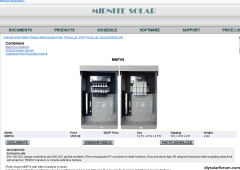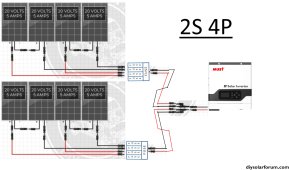TheCoachStone
New Member
Hello everyone.
I have a LV6048 and I have found some local panels I want to try.
The LV6048 -
The panels are REC360AA -
By my math, a 2s4p would give me
I have a LV6048 and I have found some local panels I want to try.
The LV6048 -

The panels are REC360AA -

By my math, a 2s4p would give me
- Solar Array Wattage: 2880W
- Temperature Compensated Array Voltage: 98V
- Controller Output Amperage: 50A
- Array Short Circuit Amperage: 39.28A
- Max Series Fuse Rating: 15A
Last edited:




